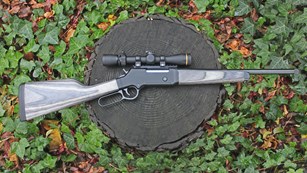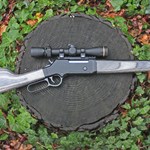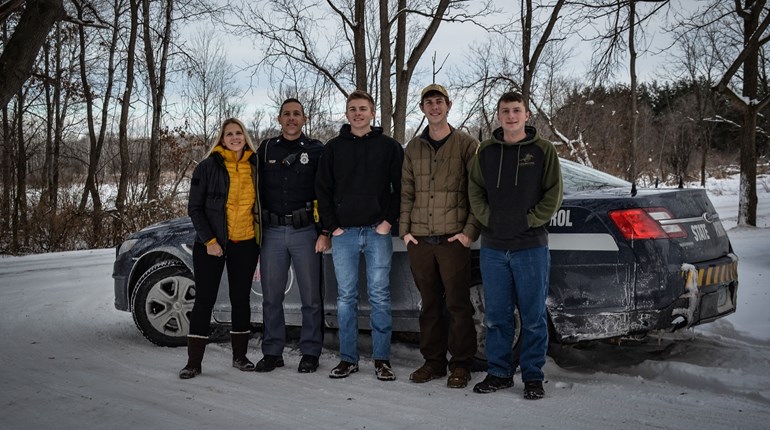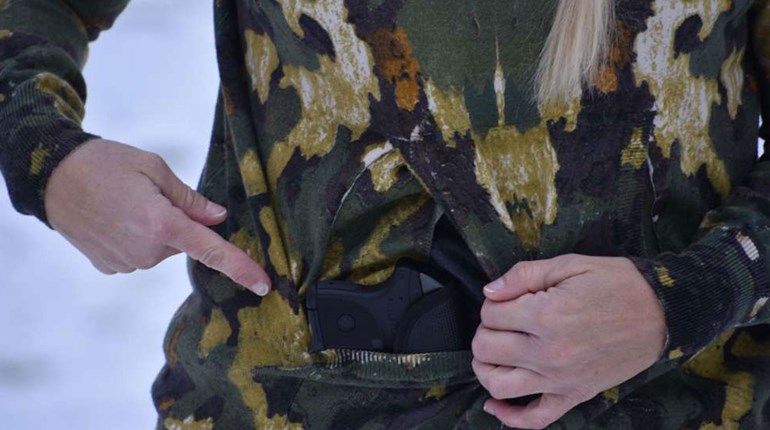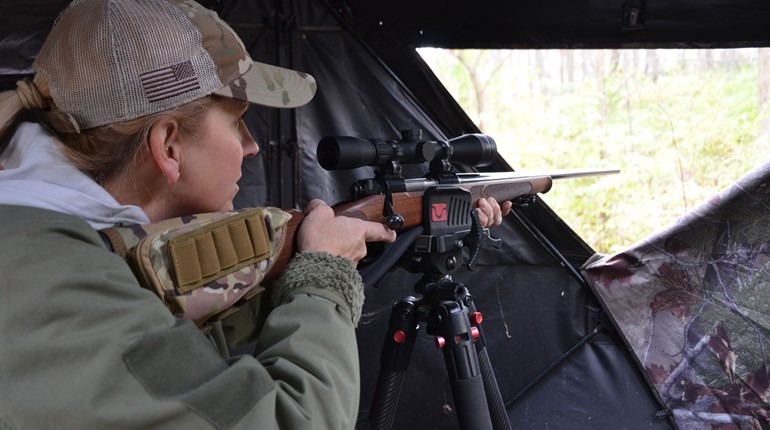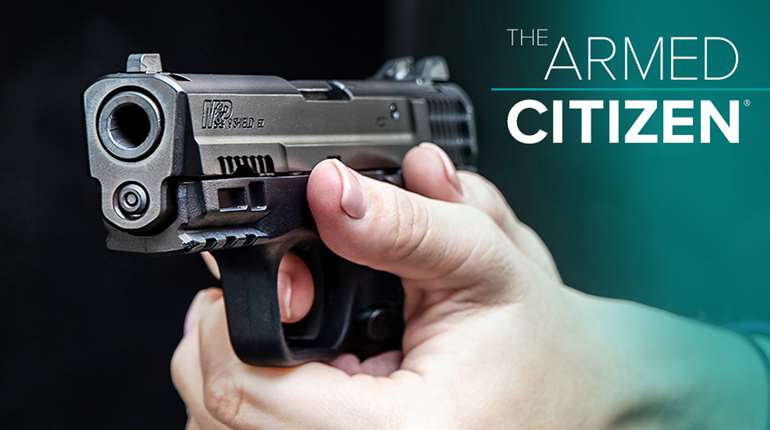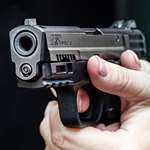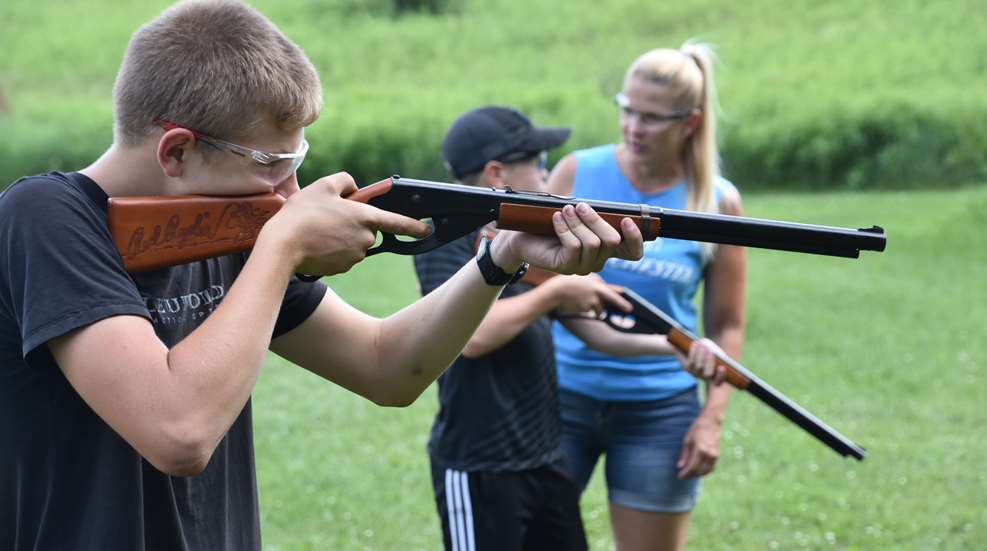
What are the unique requirements to hosting a party on a shooting range, or even engaging in plinking at the family BBQ? Along with millions of new firearms owners in the country over the past several years comes more opportunities to engage in a fun, outdoor pastime with family and friends. This is also a reason to educate yourself about how to safely spend time recreating with firearms. Based on my lifetime of shooting at family functions, I want to share some thoughts on this.
Safety Starts with YOU
While everyone who owns and uses a firearm should know the 4 rules of firearm safety, don’t make assumptions. If you are hosting an event, it’s OK to hand out the rules of firearm safety in writing, and make your group recite them before you start shooting. In fact, if you are hosting an event, just go ahead and print some range safety cards for them.
Other safety items essential for your event are eye and ear protection. Ensuring that every participant and observer has proper eye and ear protection is a must. Tell your guests that it’s a non-negotiable; you wear these, no exceptions. Make sure guests understand that sunglasses are not a suitable stand-in for ANSI-rated eyewear.
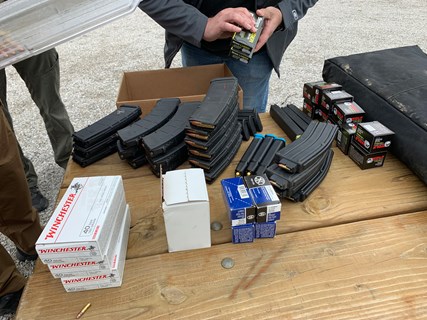
Consider Special Guests
If your event is just casual plinking, your biggest worry might be ensuring that everyone has a chance to shoot the firearm that they most want to try, and that you share your ammo accordingly.
However, if your guests consist of young children or older adults—those who might need special help with manipulating firearms, or remembering all of the rules of firearm safety—plan for one person to help each of those individuals. In fact, if your guest list is comprised of those with vastly different skill levels, splitting your time can make it much more enjoyable. For example, the uncles or cousins who duck hunt together might not want to wait for grandma or the grandkids to be given their first shooting lesson, while the youngest participants might not have the patience to wait their turn. So take into account who is in your party, and plan time to allow everyone to enjoy range day without crowding each other or getting bored waiting. We usually accomplish this by allowing the youngest to shoot first with proper instruction and assistance. If they want to stay afterward and watch the more experienced people shoot, they can.
Don’t Overdo it!
Depending on who you have at your event, you might want more or less time actually shooting. If you are hosting in inclement weather—rain or extreme cold or heat—try to keep everyone warm / cool and happy. Stay indoors to discuss safety even before you get out to the range. And remember that cold hands coupled with unfamiliar skills is not a recipe for dexterity and success. Too, high heat and sweat do not make for confidence in gripping a pistol or mounting the stock of a shotgun that’s been laying out in the sun against a face. Choosing to adjust your time for uncontrollable weather situations will keep your guests happier and safer.
Never Compromise on This One Rule:
Drinking alcohol is a social activity that often takes place at parties and even casual get-togethers. One rule to never compromise on: Once people have consumed alcohol, no more shooting.
In fact, it’s best practice not to serve alcohol if you plan to shoot. Or shoot first and put the guns and gear back in the safe, and then continue with the rest of your social event.
Often ranges will enact policies to ensure that shooting and alchohol consumption don't mix, such as a wristband if you plan to drink (or if you can’t) so that you are not accidentally served (or allowed on the range). That’s too much liability for an individual host to take on. It’s simply best to separate the two activities completely.
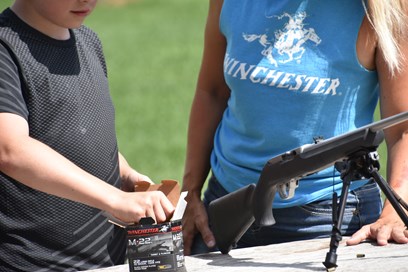
Children
Consider that toddlers and other small children might not be the best participants in a party on the range, even as spectators. Their temperament and ability to understand can often make getting them to wear safety glasses and hearing protection a challenge. They can also wander and touch things they shouldn’t. This doesn’t mean don’t teach them about firearms. In fact, letting them observe for a few minutes or see what everyone is up to before shooting starts might be a good lesson in, “You cannot touch this.” but still allowing them a chance to see what’s going on.
Instead of making firearms something they don’t talk about or see, make firearms something they know they will one day be old enough to use, and that right now, they must have supervision to even look at it. Allowing them to experience the sound from a short distance, while still wearing proper protective gear, can create an opportunity to understand why Mom and Dad say, “Do not touch; get an adult if you see this.”
So if your event involves firearms and small children, plan a location where an adult can supervise them away from the shooting and noise and that parents can decide how to best proceed for their family. Maybe that’s inside the house, maybe that’s staying at someone's house for a little while.
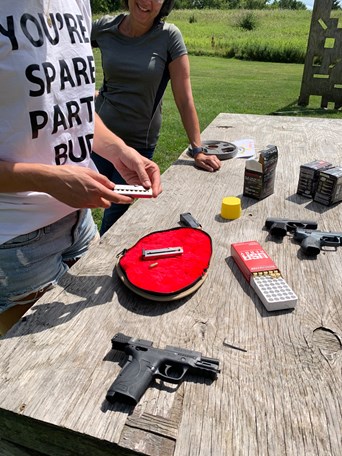
A few quick tips to help your day:
Establish a range officer. There should be a competent adult in charge of the entire process. It should be someone who knows the firearms themselves and rules of how to safely use them. Better yet would be a “range officer” supervising every person who is actively shooting. Even if it’s just a bunch of gals enjoying some plinking, taking turns so you can coach and give each other feedback helps make the process more enjoyable.
Establish a firing line. Just as you would have a firing line at a structured range, create one for your event. Use a table, boards over sawhorses, or even something as simple as a tarp on the ground that the firearms are laid out on. The pros of using a table or elevated work area is that it can prevent people from “flagging” themselves or others as they pick up firearms. Something as simple as a folding table will work.
Establish a safe area. If you have to handle or look at a firearm, or teach safe gun handling to someone, but there is no room on your firing line (or it’s too loud), then a safe area can help. A safe area is for handling firearms but not ammunition. It’s best to remove any magazines from your belt and leave them outside the safe area.
At ranges, a safe area is usually a countertop height table facing a berm or backstop. Often this is “dug out” into a berm so it’s sunk in and the person handling the firearm cannot flag or “muzzle” anything but the berm as they handle the firearm. If a berm is not possible, then an area off to the side of the firing line, facing the same direction as the firing line, is an acceptable alternative. The main goal is that nobody in either area can pose a danger to each other.
Establish a “cold range.” Give your guests a quick rundown of the rules before you begin, and remind them every time someone needs to go down range or hang a target, the range goes “cold,” that every firearm must be cleared and visually inspected, and nobody handles firearms again until everyone is back behind the firing line.
Safety check before you start. Go over the rules with an empty gun and have your guests dry fire first so you can assess their safety and firearm handling skills. If they need help, don’t allow them to shoot until you feel they can safely perform the skills needed for what you are planning to do. If they cannot, then invite them to watch and maybe consider having that person only shoot from a supported position, like prone off a bag. Find something simple, like a .22 rifle that can be managed and used to build skills.
Commercial Considerations
Not everyone has the ability to have a party and invite their friends to shoot on their land or at a private club. People who live in the West where recreational shooting is allowed on public land might not feel comfortable doing this with a group. This means you will look for commercial options, like a range that you book for an event.
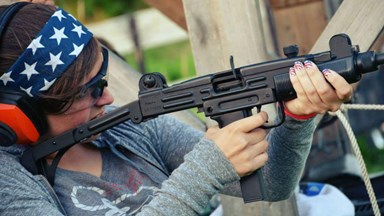
When booking a group event at a range (think bachelor or bachelorette party), consider looking for ranges that focus on safety. Celebrating a milestone in life shouldn't come with risk, so mitigate risk by looking for venues that put safety as a priority. Find a range with enough staff to properly support your group. Consider attending a class instead of just a range outing, if your guests are not very experienced. But ask for a low-key, very basic class—like safe handling and shooting your first rounds insteada of one with a tactical focus or that requires hours of boring classroom time. Look for a venue with a private room on the range or an outdoor facility with a clubhouse. You can go from bare-bones to swanky, if you dive into some research. The laid-back nature of shotgun shooting sports, like 5-stand and sporting clays, is why this is often a popular option.
Insurance
This isn’t something fun to consider, but if you understand the reality of liability and you are not hosting very intimate friends, then you should consider hosting your event at a range with safety officers.
If you decide not to do this, then seriously consider keeping your party small, and vetting anyone attending based on their ability to follow safety rules and observe range commands. You will also need to have the discipline to speak up when something is outside the scope of their ability, or if they see others who need help.
Time outdoors is always good. Making memories outdoors with family and friends—and your firearms—is one of the most American ways to write your life story. Do it safely and have fun!










